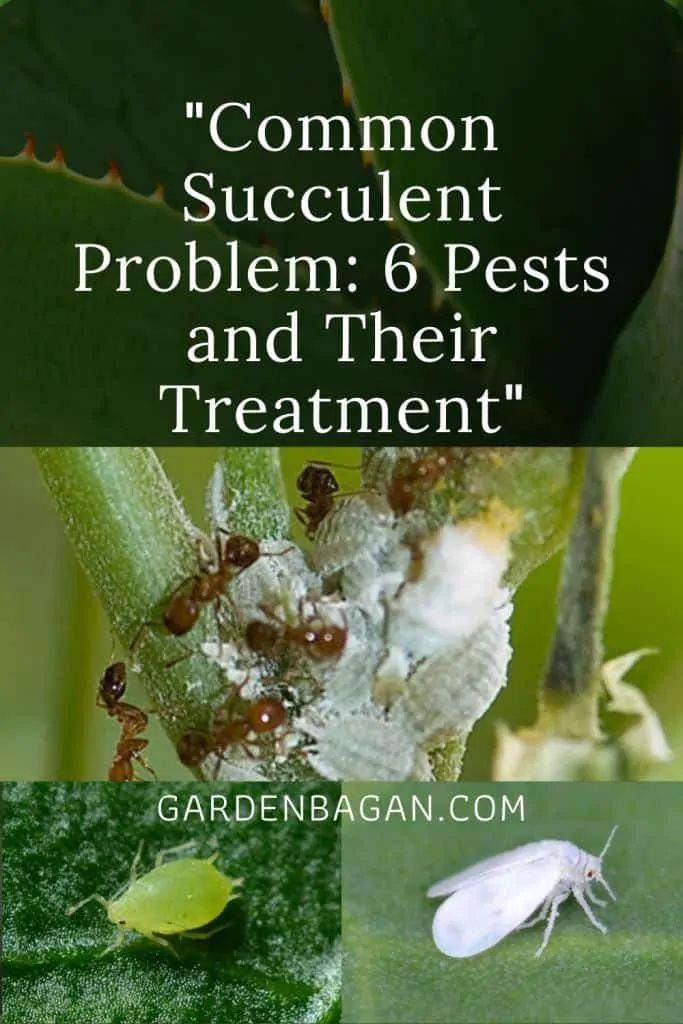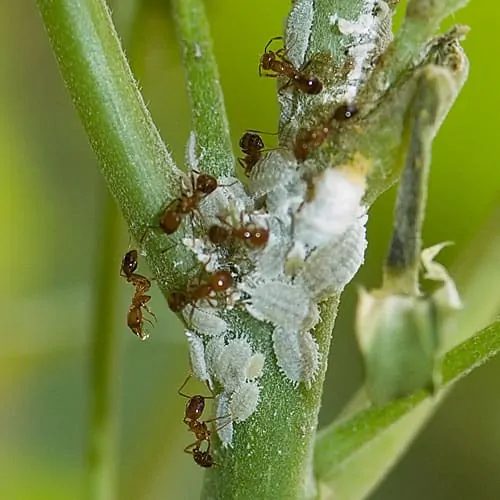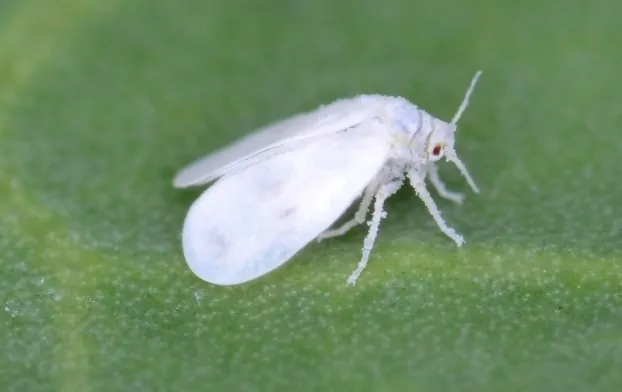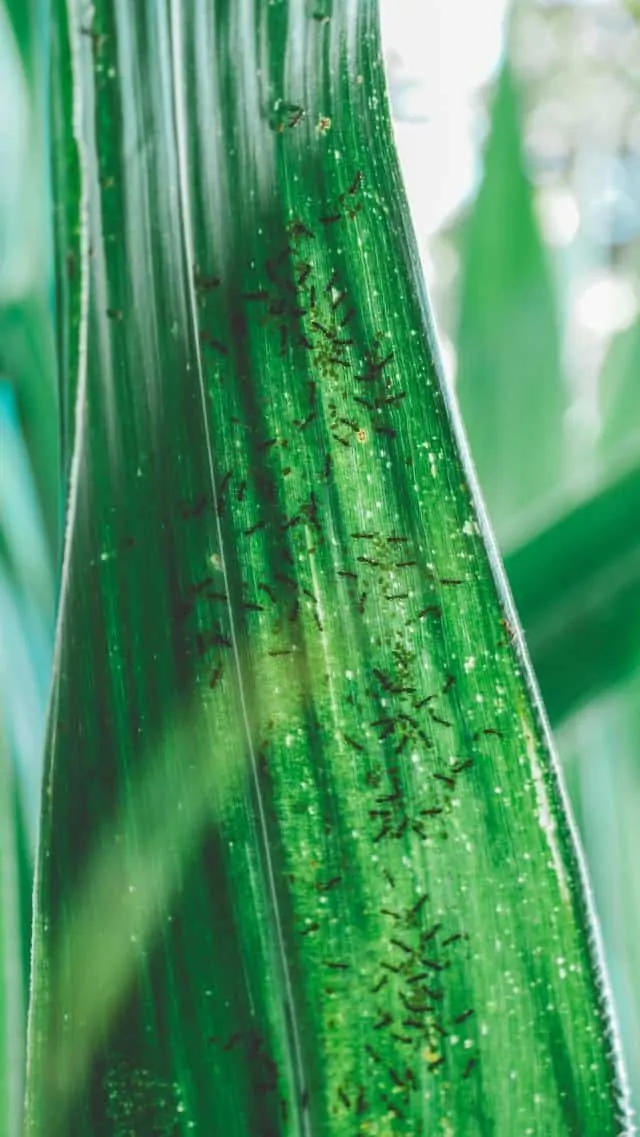Succulents- tiny little green, brown, purple plants decorating your tabletop. Really It is all? It this the only thing a succulent got? Nope, certainly not.
A succulent is a more diverse group of plants than we think. These beautiful plants can save water in their thick leaves and fleshy stems. Some of these plants can grow are as big as yourself or even more.
Besides being beautiful these plants can live and survive in harsh climatic conditions. You can find thousands of succulent variants from deserts to hills. There is noticeable diversity even with the color and patterns of these plants.
Succulents are interesting plants. They are adaptive to their surroundings and really easy to grow and maintain. But I am not here talk about all its goodies. In fact, today I will discuss some of the common problems that you can face while growing these succulents.
Overwatering is the main cause of the problem with most of the succulents. Their roots can not survive waterlogging. Other than that there are certain pests or bugs that can harm your succulents like aloe vera or portulaca plants.

Also read: DIY Aloe Vera Soil Mix recipe, Best Homemade potting mix
Common Pests on Succulents
Succulents are fairly soft stem plants. Generally, these plants stay in the shadow for a long time. Missing regular movement of plants towards sunlight is a common habit for most of the gardeners.
Like I already said, These plants have a soft stem, contain lots of moisture, and left in shade for long. Altogether this scenario is an ideal playground for many pests and bugs. All this makes your succulents an easy target for these sap-sucking tiny creatures- we call them bugs.
There are nearly dozens of different bugs and pests that can affect your plants. But Your household succulents are more susceptible to these 6 Common Succulent problem causing pests.
They are- Aphids, Mealybug, Gnats, Whitefly, Scale Insects, and Ants. Other than these sometimes you can find Cochineal, Spider mites, and thrips causing problems to your succulent plants.
How to Identify Common Pests on Succulent Plants
Some of these bugs are easy to identify whereas to identify others you have to be careful. Most of the time our eyes are the biggest tool we got to look after these tiny little annoying creatures.
Products to Control Common Succulent Problem
- Neem Oil for Plants
- Liquid soap safe for plants
- Garden Pump Sprayer
- Bonide (BND857) – Pyrethrin Garden Insect Spray Mix
- Garden safe Houseplant and Garden Insect Killer
- Clark&Co Organic 3000 Live Ladybugs
(All links are from amazon.)
You can also read my previous article: Are Rainbow Roses Real or Fake? Something to Know
Let’s start by observing each of these succulent pests one by one.
How to Identify Aphids?

Aphids are really tiny insects. There are many different types of aphids common to succulents. Two of them are more dangerous and vigorous to your plants. These are The Green Aphids and the Black aphids.
These creatures are fairly easy to identify. They are small in size but big enough to be observed by naked eyes. They start moving quickly when disturbed. This is the easiest way to identify these tiny bugs.
Aphids live in a cluster and mostly found in the node section and underside of the leaves. They cannot survive in direct sunlight. Aphids move toward shadow to be safe from drying out.
How an Aphid Damages a plant?
A single aphid is not enough certainly to kill your plants. Most of the time aphids don’t kill your plants.
They just suck and feed on the fluids or sap of the plants. Aphids generally affect the new branches and tips to the plants. So more often you can manage to save your plant. You just have to react as quickly as you notice even a single cluster of aphids.
Mind it, Green aphids have great natural camouflage. And Yes, they can fly from one plant to another. It protects them from the sneakiest eyes. So always be careful while searching for these tiny insects.
What is the main Cause of Aphids?
Actually there are two reasons that encourage the growth of aphids in your plants. First is overwatering and the second is overfertilizing.
Both Overwatering and frequent fertilizing contribute a lot in attracting aphids to your succulents.
Also read: How to Kill Grass Burrs? get rid of southern sandspur
How to get rid of Aphids on Succulents?
- Make a habit to provide regular sunlight to your plants, even if it is succulents. 2-hour sunlight or at least 8-10 hours of powerful grow light is necessary to keep the succulents healthy. Also, sunlight plays an important role in drying the leaves and distracting aphids from the plants.
- Mix 2 spoon full of liquid detergent, 2 spoon cooking oil with 3liter, or 1 gallon of water. Mix everything thoroughly. You can add a few drops of Neem oil to this mixture.
- Spray this mixture over the plants in the early morning. Water thoroughly as if you are bathing the plant. Do this procedure in the morning when the sun is low.
- Don’t spray your succulents in the afternoon or at night. If you water the plants at the noon or at night then the plant can go in shock due to sudden temperature change. Also, long exposed to moisture can cause the fungal attack to the stem and leaves.
- Repeat the procedure twice a week, only if needed. Else no need to waste time spraying water here and there.
How to identify Meleaybugs?
Mealybugs are another easily identified pest common to succulents. These are tiny distinctly segments insects. The size of mealybugs ranges between 1/8 inch to 1/4 of an inch.

Most people say these tiny insects are white and fluffy but they are not right. Actually, mealybugs are slightly brown in color.
They secrets honeydew that attracts ants. Mealybugs also form soft fur-like white wax covering. This white wax covering the entire mealybug is easy to identify.
Again, like aphids, mealybugs also live in a group. They also move when disturbed but not so fast as aphids. Mealybugs can’t fly from one plant to another. Though some type of mealybugs can have wings, still it is not very common.
How a Mealybug damages a plant?
Just like aphids, Mealybugs also feed on the plant sap. The problem is more dangerous with mealybugs. This is so because they can drawing a plant within days and can even kill an entire garden within a few months.
Mealybugs are more dangerous because they can survive direct hot sunlight. They can even infect hardwood plants like hibiscus and chilies.
Mealybug first finds a safe spot on the stem or under the leaf. Then fix it into the position fit to suck the sap out. After that, it starts releasing honeydew and covers itself with white protective wax.
Within a few days, one single lone wandering mealybug can turn into 300-400 mealybugs infecting the whole plant.
What makes Mealybug a difficult pest to deal with?
Yes, Indeed, A mealybug is one of the toughest pests to deal with. The insect itself is not so strong but it has a big difference mechanism.
Yes, the natural wax is the strongest weapon of the mealybug. This wax protects the bug from drying on hot days. Also, the same wax is responsible for saving the mealybug’s life in rain or jet shower. You cant even kill these pests with ordinary soap mixture or with some pesticide. All this is for the natural wax that defends a mealybug from everything.
Can you kill mealybug with soapy water?- No, certainly not. You cannot kill a mealybug with water and soap unless until it has a wax cover. First, you have to dissolve the wax covering to kill the mealybug
You should read: How do you get rid of the fungus in the garden soil?
How to Kill Mealybugs on Succulents?
Generally, succulents are soft stem plants. You should be gentle while treating mealybugs on succulents. Follow my steps to easily get rid of mealybugs from your succulents.
- Use an earbud or cotton swab. First, dip the swab in rubbing alcohol and remove any visible mealybug from the plant.
- Don’t let any bug run away. It seems silly but very important. Try to kill each insect by rubbing it with anything. One live female or egg can again infect your plant.
- Isolate and monitor your plant for 3-6 days. If the problem gets controlled the repeat these steps whenever required. Else keep reading.
- Wash off the entire plant with a 30%-50% solution of alcohol and plain water. Use a sprayer if necessary. Also, you can dip the entire plant in this solution for a minute if possible. Don’t worry this will not harm your plant.
- Let the plant dry in a sunny area. You can put the plant indoors but try to place it near a light source or window. It should get at least 2-3 light daily.
- Don’twater the plants regularly. Try to observe for moisture levels in the soil. If it is completely dry then only water the plant. Else stop watering immediately.
- Stop fertilizing as soon as you can. You should stop applying fertilizers Once any mealybug is found on the succulent plant. A recent study shows high level of nitrogen High attracts mealybugs.
- Once cleaned thoroughly, apply a mixture of soap and oil over the leaves. You should add a few drops of neem oil to repel bugs.
- You can also use chemical pesticides if the situation is very serious. Still, I don’t recommend the use of chemicals to kill or repel insects as they are harmful to bees and betels.
- Technically discard the plant if possible. Succulents are not that pricy so wasting more money and time in pesticides seems worthless if you can buy a new plant in just half of it. Think again and act smart. A good decision can save you a lot of time and money plus protect all your plants from mealybugs.
Mealybugs are highly contagious and quickly spreading bugs. Therefore acts as quickly as you notice the first bug in your succulent plant.
How to identify Whitefly and Gnats?
Like the name suggest whiteflies are tiny white flying insects. These insects are very harmful to soft plants especially succulents.

Whiteflies are similar to aphids. The only difference is that these insets are attracted to easy nutrition. They don’t stick to one spot for long. Still, they are devastating to the affected area of the plants. Curling of new healthy leaves is very common with a whitefly attack.
Gnats are tiny mosquito-like insects. These tiny creatures are rather annoying than being harmful to the plants itself.
The attack of whitefly and gnats increases with overwatering and over-fertilization. These insects can be easily controlled by controlling regular watering and application of fertilizers.
How to Control Whitefly and Gnats on Succulents?
- Regulate watering and stop over-fertilization. Water the plants only when most required. Once in a week or month according to temperature.
- Make a solution of soap and water. Add 2 Tablespoon of cooking oil in it. Add a few drops of neem oil, if you have. Also, add half a teaspoon of chilly powder.
- Soap and oil will kill most of these bugs instantly. Those who are left will fly off due to the availability of capsaicin present in the chilly powder.
- This solution is really very effective in almost every bug or insect. You can also add a few cloves and ginger to this solution. This will make a more effective homemade pest control solution for succulents.
How to identify Scale Insects?
Scale insects are very similar to mealybugs. They also release hone dew and sucks plant sap. The only difference is that they don’t move quickly from one spot to others like mealybugs.
Scale insects fix their body to the leaves or stem and keep on sucking the plant fluids throughout their life. Once mature they lay eggs and this cycle continues.
Most scale insects are identified as brown scale patches on the stem and leaf of succulents. These insects are mostly flat and round in shape. This make them hard to find.
Once scraped the come out as tiny fish scales. This is why they are called scale insects. Scale insects or bugs are really easy to clean and remove.
How to control scale insects on Succulents?
- Remove as much bug as you can. Manually doing this is the first and most basic step to kill scale insects.
- Use alcohol swabs to leaf shiner to wash them out of the plant.
- You can also use alcohol dips to wash off all the scales. Spraying with an alcohol solution is also very effective in this case.
- After cleaning just apply soap and oil mixture over the entire succulent plant.
How to get rid of Ants?

Ants are the easiest of all to identify. These creatures are not that harmful to plant, like others on the list. Ants can only be harmful if they are specially leafcutter or root cutters.
Other than that ants are just annoying and painful to gardeners and plant lovers. Plants are especially safe from ants.
So another question arises-
Why do ants attack plants like succulents?- Obviously for food or in search of a source of food. Most of the times ants attack plants that are already affected by aphids or mealybugs. Ants are attracted to toe sweet honeydew secreted by these bugs. Also, ants took these bugs as a material for their underground farms, where they cultivate their own food- the edible fungus. Well, we will discuss that some other time. For now, let us move on to the ways to control ants.
Certainly, there are many ways to treat ants. I personally prefer the natural organic way to get rid of ants. I always try to reduce the use of chemicals in my garden as much as possible. So check out these homemade recipes to control ants effectively.
- Take 2-3 full-sized cloves, 1 ginger a spoon full of chilly powder.
- First, make a paste of clove and ginger. Add 1 liter of water in it and let it ferment for 3-4 days. Fermentation is important. Close the lids as much as possible during this process.
- After 4 days, mix 1 spoon full red chilly powder in this solution. Mix it thoroughly. Wear a face mask, pair of hand gloves, and a glass to protect your self from a chilly accident.
- Let this mixture settle for a few hours. 1 or 2 hours is enough for this step.
- After that, filter the solution and pour it into a sprayer.
- Apply the mixture near the affected areas. Don’t apply too much. Just 1 or 2 sprays per spot will be enough. Mostly apply this mixture near the base over the soil.
- This mixture will not kill any ant- I am sorry for that. but I can 100% assure that all ants will run away from your plant and never gonna come back.
- Don’t apply this mixture in day time. Early morning or late evening is ideal for singing this solution on succulents.
Note:- You can dilute this mixture if it looks and smells too strong. First time apply a little amount to test the intensity over the leaves. Too much concentration can cause leaf burn.
Other insects and bugs like Cochineal, Spider mites, and thrips can also be cured and controlled effectively by the steps given above.
Natural way to control pest-Succulent Problems

You can also take help from some natural pest killers to control common problems in succulents. Lady Bug is an ideal natural predator for mealybugs and aphids.
Other than that these bugs are helpful in population, hence increases the fertility of the plants.
How To identify Ladybugs?
Ladybugs are colorful tiny bugs with beautiful spots on their back. The bright color and later spots are quick clues to identify a ladybug.
How a Ladybug help in pest control?
Ladybugs feed vigorously on mealybugs and aphids. Other than that they also feed on thrips, spider mites, and scales. These friendly bugs are the best natural ways to control pests on your succulents.
You can either introduce eggs or adult ladybugs to your plants. You can even purchase some on Amazon.
Once they eat all the mealybugs and aphids, they automatically take care of other pests. You need not feed them again.
You can read this before leaving: How to Grow Oyster Mushrooms at Home in polybags
Final Words
I hope you have got all your answers regarding how to control the common succulent problem. What is the easiest way and how to do it naturally? If you want anything else or need some extra help then write down below in the comment section. I ‘ll be right back with new fresh interesting updates on gardening.
Till then stay tuned, keep reading, and keep gardening.
Live the Green!
*Image Credit: Wikepedia
